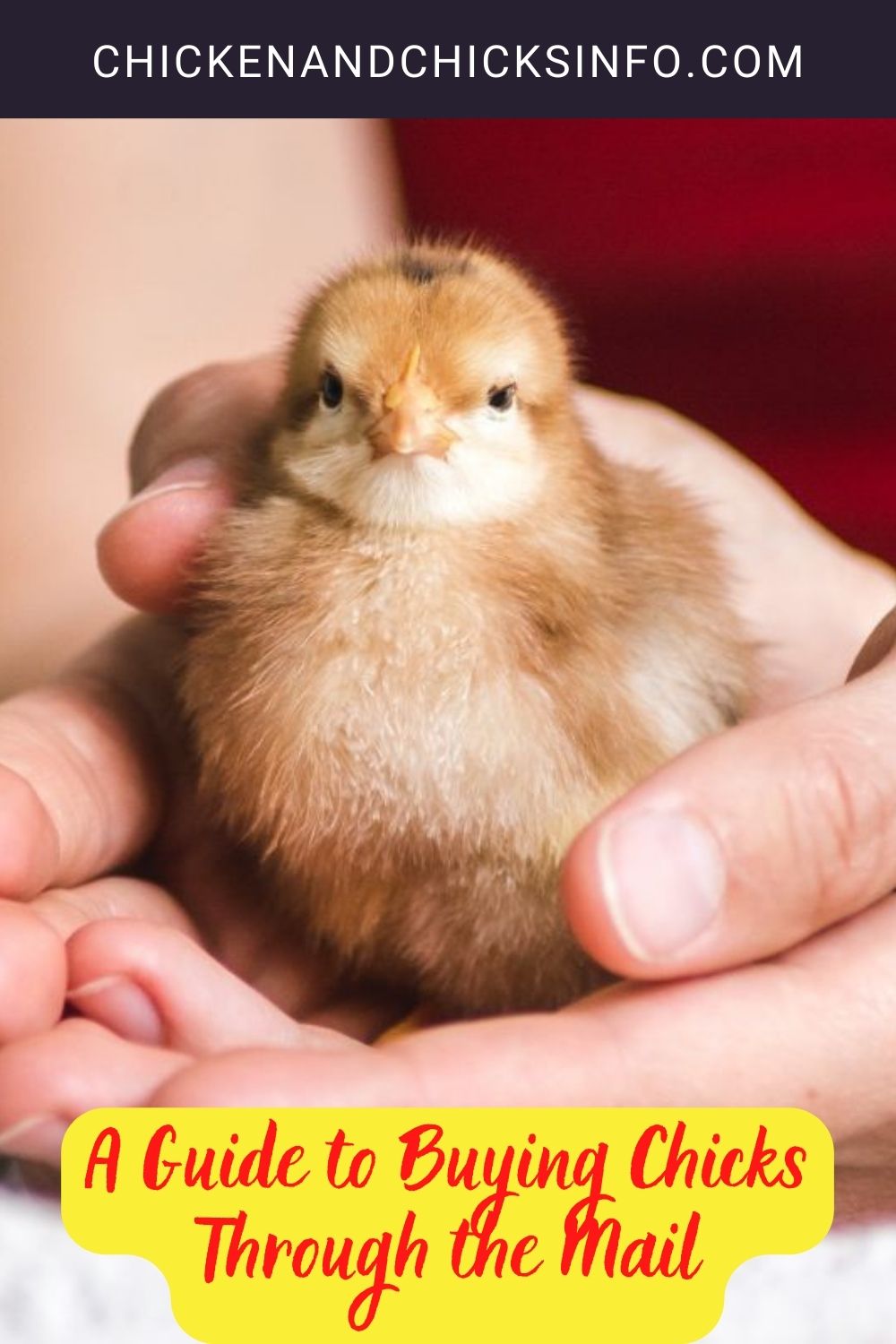If you’ve never heard of such a thing before, it might sound crazy; but it’s true—you can buy chicks for shipping through the U.S. Postal Service! (And chickens, fowl, and other poultry.)
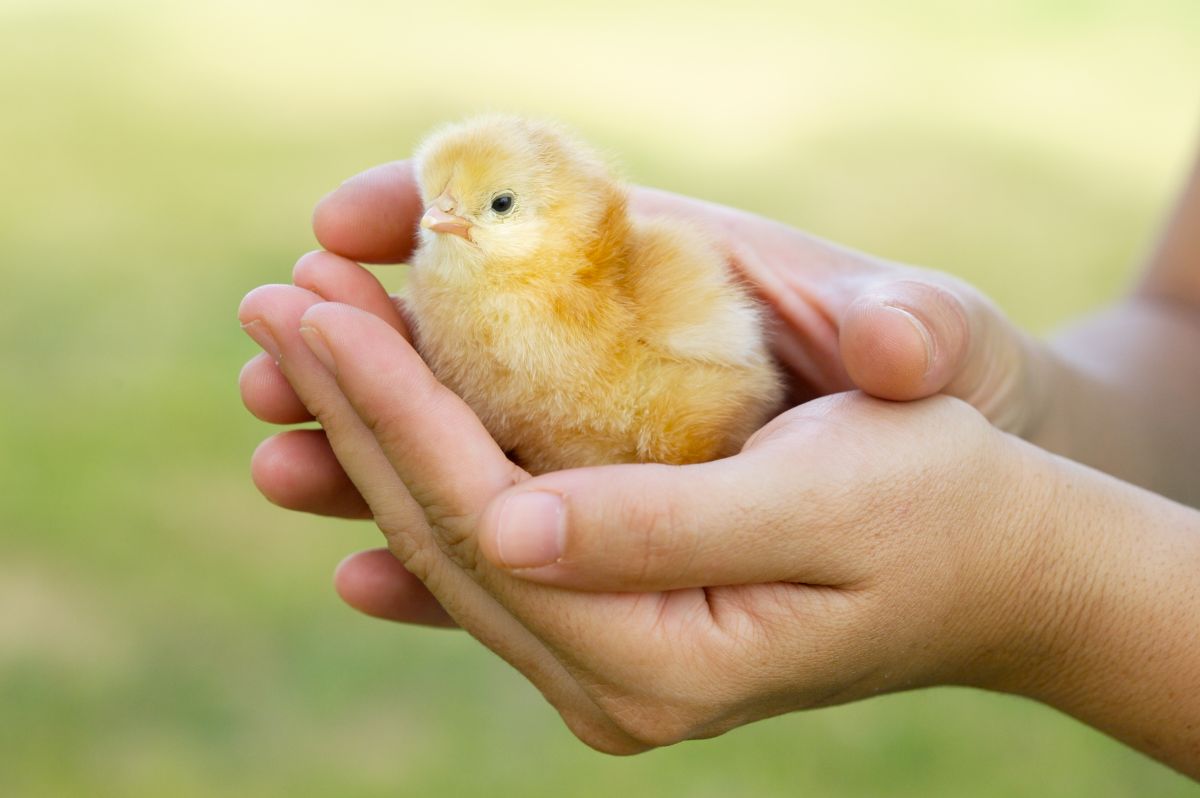
Buying chicks for delivery through the United States Postal Service (USPS) has a number of advantages.
Jump to:
- Why Buy Chicks Through the Mail?
- Is It Safe to Buy Chicks Through the Mail?
- How Can Live Chicks Survive and Be Safely Shipped Through the Mail?
- How Do You Buy Chicks Direct from a Hatchery Through the Mail?
- How Old Are Chicks and Chickens That Are Ordered Through the Mail?
- How Many Chicks Do I Have to Buy to Order Them Through the Mail?
- Mix and Match to Meet Order Minimums
- What Guarantees Do I Have When I Buy Chicks Through the Mail?
- What Do I Do If My Chicks Arrive and Some Have Died?
- Vaccination and Additional Hatchery Services for Mail-Ordered Chicks
- What to Do with Your New Mail-Order Chicks When They Arrive
- More Tips for Buying Chickens Through Mail Order
Why Buy Chicks Through the Mail?

- You get the best and widest possible selection of chicken breeds.
- Chicks are shipped directly to your local post office, where you will need to pick them up. Chicks are not exposed to environmental conditions at numerous locations like public stores or other farms.
- Chicks experience less transit and less handling because they come straight from the hatchery to you.
- There is less potential for contamination and disease transmission versus buying from a breeder, local backyard chicken keeper, or farm. Hatcheries may be inspected and certified through the National Poultry Improvement Plan (NPIP).
What many people don’t realize when they are looking for chicks is that most of the chicks that you can buy or order from a source like a feed, pet, or livestock store are the same exact chicks that you can buy direct from an online or mail-order hatchery. Those chicks are also shipped through the U.S. postal service. They are just delivered to the store’s post office, instead of to yours.
The store or supplier, naturally, will be in business to turn a profit, so in addition to the additional handling, they will mark the price of the birds up.
Basically, when you buy your chicks directly from a hatchery, you skip the proverbial “middleman”. That translates into scheduling flexibility, cost savings, and greater control over chick purchases, among other benefits.
Is It Safe to Buy Chicks Through the Mail?
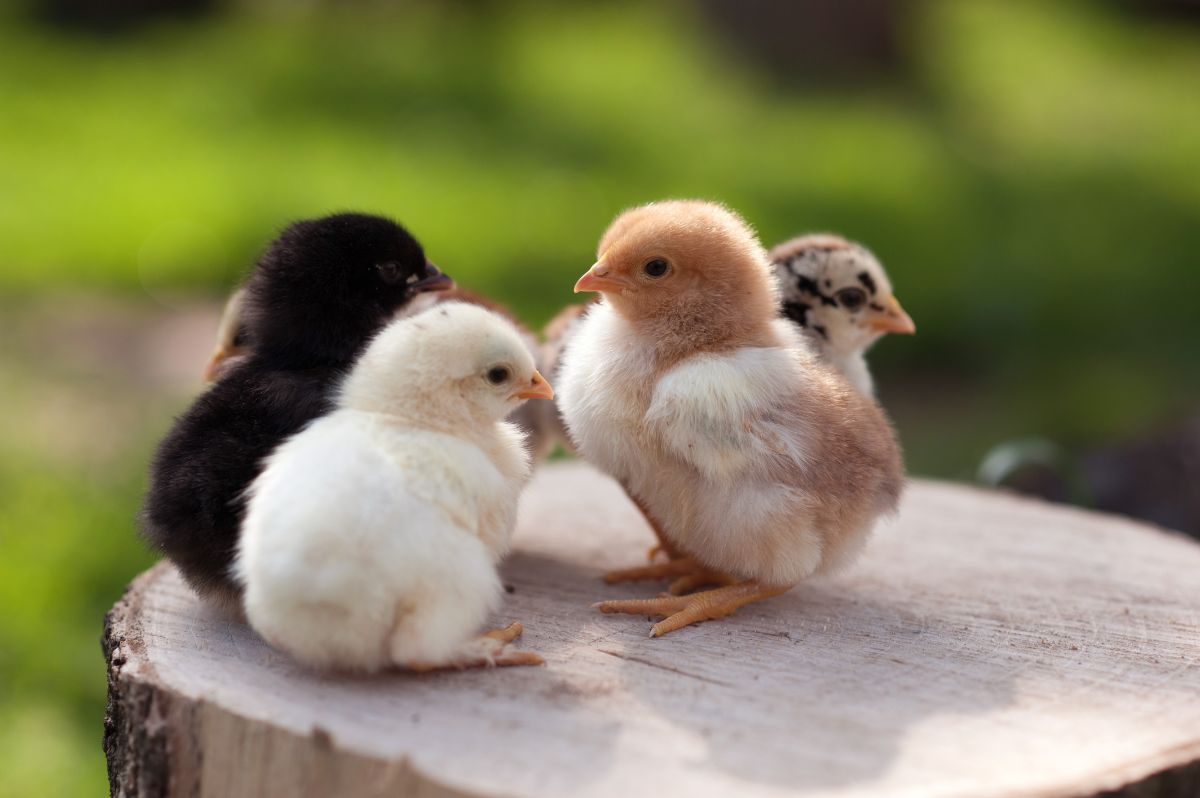
The short answer is yes. It is just as safe for you to buy your chicks directly through the mail as it is for a local agent to do so.
Hatcheries are not in the business of shipping or supplying dead chicks. They are very good at what they do and have developed good policies, plans, strategies, and shipping products to protect young chicks while in transit. There is little to no difference between chicks that are purchased and shipped to a store as opposed to those purchased and shipped to you.
How Can Live Chicks Survive and Be Safely Shipped Through the Mail?

Day-old chicks can survive shipping because they are naturally designed not to need feed or water during the first three days of life.
While in the egg, the yolk is the chick’s source of hydration and nutrition. Just before the chick hatches, the remaining yolk is absorbed. The chick “feeds” and survives off this for the first 72 hours of life. In the wild, this design ensures that the chick will have enough time to find a source of food and water.
For our domestic chicks, this gives them a window of good nutrition and survivability in which they can be shipped.
Of course, another requirement for young chicks is that they be kept warm. In the case of mailing chicks, this is achieved through a combination of shipping materials (specially designed boxes and straw mat bedding) and by the number of chicks that are shipped together.
Hatcheries will not ship just one or two chicks, and they will divide large orders into segmented boxes so that there are not too many chicks in a space. This helps to make sure chicks don’t get overheated or underheated and that there is enough quality air for the chicks to breathe.
How Do You Buy Chicks Direct from a Hatchery Through the Mail?
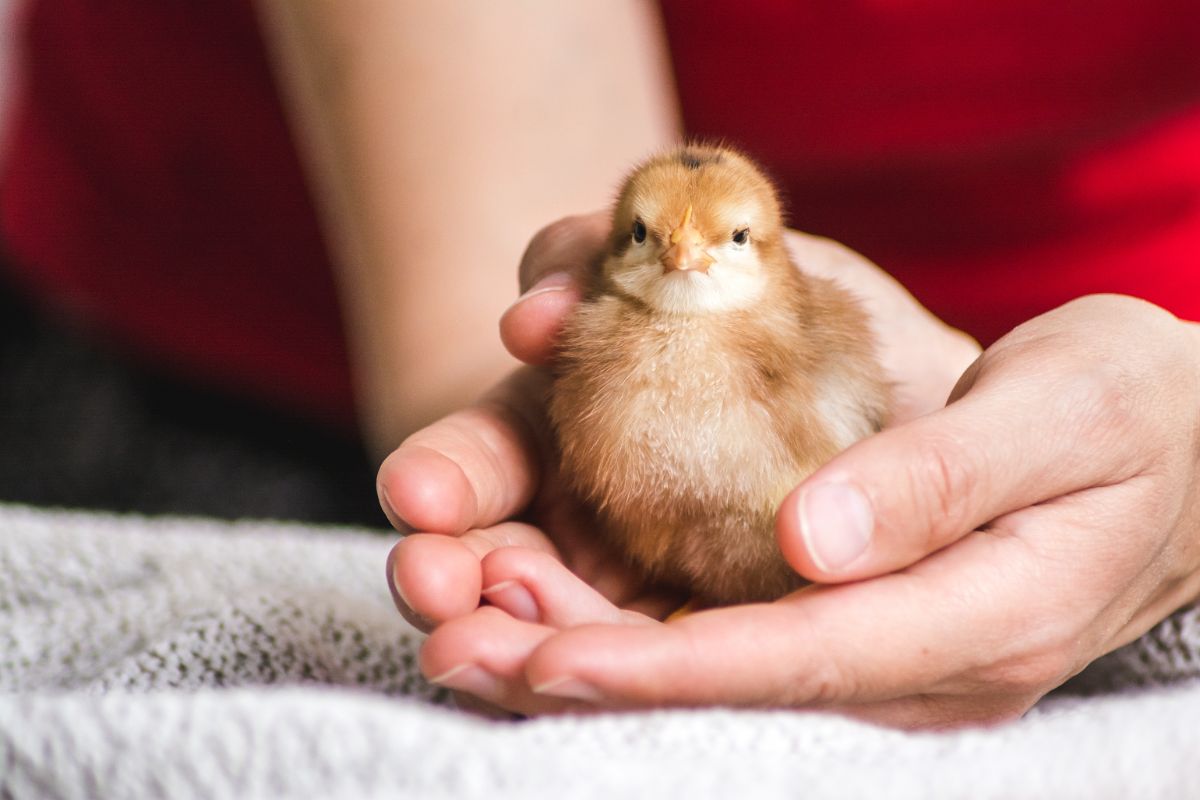
Buying chicks through the mail is the easy part.
Many hatcheries still print paper catalogs. You can sign up on their mailing list, and you will be sent a free copy each year. You can either mail in the order form the “old-fashioned” way, or you can go to the hatchery’s website to order. Most hatcheries will also accept orders over the phone.
Of course, today, ordering online is the easiest option. You can use the hatchery’s website to research the breeds you have in mind. You can also filter their offerings by many metrics, such as egg color, type, meat production, dual purpose, climate tolerance, and more.
Once you know what you want, you’ll select the number of chicks of each type and add them to your cart. Many, if not most (but not all) hatcheries will also include availability information for the specific breeds you want. You will usually need to select a hatch and ship date, or one will be assigned to you.
If you are not given a ship date at the time of your order, email or call the hatchery! It is extremely important that you know when your chicks are shipping ahead of time so that you can be prepared with a heat source, feed, and water, immediately upon arrival. You also must know when the date is so that you know you will be able to pick them up right away when they get to your post office.
The post office cannot hold chicks at their site for any lengthy amount of time. Your chicks will not survive if you do not pick them up and get them the care they need.
Chicks will arrive within three days, but sometimes they move more quickly through the mail system. This can also vary depending on how close you live to the hatchery. Be prepared and have the flexibility in your schedule to pick the chicks up anywhere within a three-day window from the time of shipping. This means be ready if they get to you a day or two early.
If you cannot find a ship date that works for you, you may need to explore other hatcheries or choose a new shipping date. The ability to pick up and care for your chicks, getting them into a good brooder with heat, water, and feed, is imperative. By the time your chicks get to you, the natural protection of the absorbed yolk will be wearing off, and they will need the resources you provide.
Important note: Hatcheries only ship chicks at the beginning of the week, usually Monday through Wednesday. In fact, the post office will not accept live chicks for shipping late in the week. This is because they need to be able to get to you within the 72-hour window. This is both a biological window (owing to yolk nutrition) and a regulation set forth by the postal service (based on that biology).
Neither the post office nor the hatchery wants to risk birds in transit when post offices are closed, so they will not ship later in the week and risk chicks sitting in a warehouse or back room on a Sunday or on a post office holiday.
How Old Are Chicks and Chickens That Are Ordered Through the Mail?
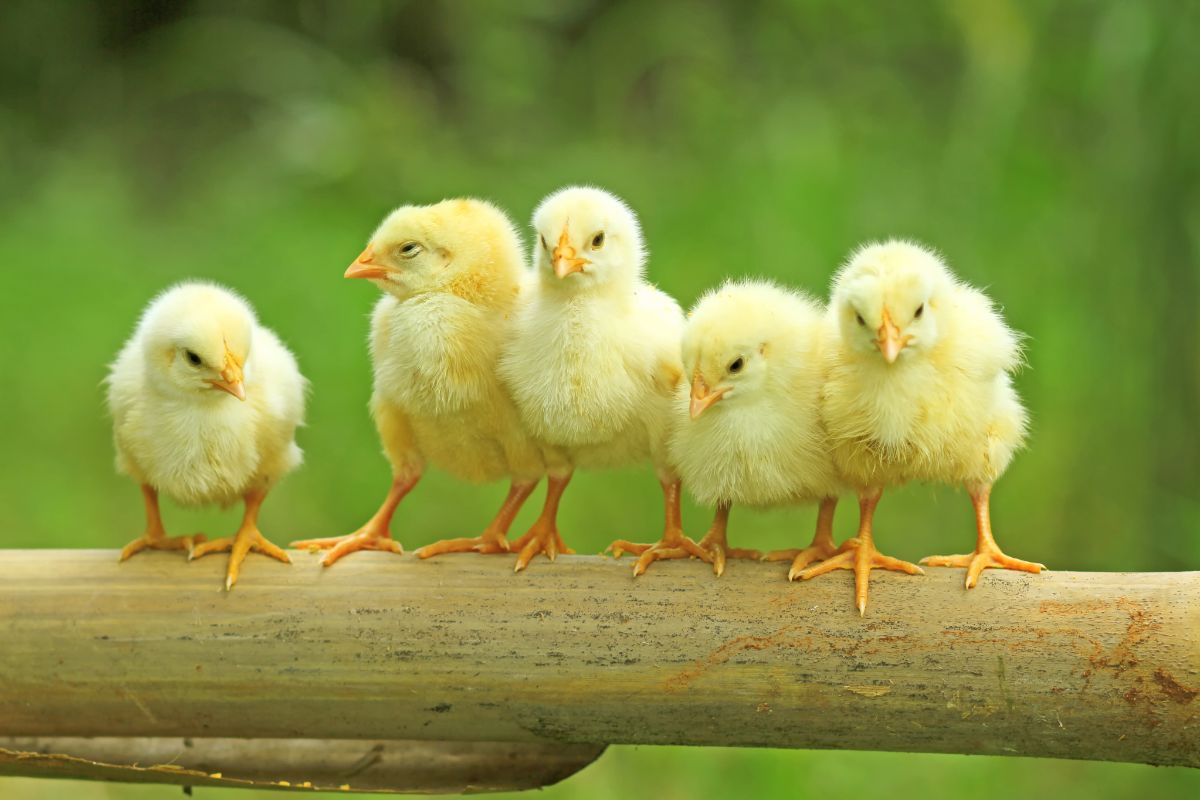
Chicks are most commonly shipped when they are under 24 hours old. At this age, the chicks have very good survivability. It is also the most economical age at which to ship live chickens. Chicks are small, and so any number can be shipped for a reasonable cost. You can have hundreds of day-old chicks shipped to you for less than the cost of a couple of older birds.
That said, juvenile and adult poultry can also be shipped through the U.S. mail. However, due to additional requirements, size, and weight, this can become quite expensive. If you are eager to have producing chickens in a short amount of time, you may find the expense is worth it to you.

Also, you probably won’t be required to buy as many adult or juvenile chickens, because they can maintain their own body heat. So, if you only want a small flock and don’t want to wait several months for your chickens to lay eggs, again, adult birds might be something to consider.
How Many Chicks Do I Have to Buy to Order Them Through the Mail?
You will find that hatcheries will have a minimum number of chicks that you must buy when you order them. This might vary between different hatcheries. It also might vary depending on where you live—the state you live in, not the state the hatchery is in. You will find that the number of chicks you must buy varies at different times of the year, too.
There are good reasons for minimum chick orders.
One reason is that the hatchery needs to be able to ship enough chicks for them to keep each other warm while they are in transit.
Another reason is that different states have different laws about the number of chicks you have to buy in that state. You will find this to be true even if you were to buy chicks in a store in person. These laws are designed to encourage committed, responsible ownership and dissuade people from buying chicks just because they are cute, with no real plan to care for them long-term.
The reason that you might find the minimum number of chicks changing at different times of the year is for reasons of health and safety. In colder months, the chicks will need more company to keep each other warm. In the warmer months, the hatcheries can reliably ship fewer chicks and still have them arrive in good shape.
In general, the minimum order for day-old chicks will be six. In an effort to support more backyard small flock keepers, some hatcheries have started offering minimum orders as low as three chicks (if the state allows—six is often the minimum purchase allowable by law). However, if you are ordering fewer than six chicks, you may be charged a small order fee. For some hatcheries, small order fees are charged for up to 20 or 25 chick orders. It all depends on the hatchery.
Small order fees are charged because the fewer the chicks that are shipped, the more handling that is involved. Usually, additional packaging and lining, and sometimes heat packs are needed to make sure that a small number of chicks can stay warm and survive the trip.
Mix and Match to Meet Order Minimums
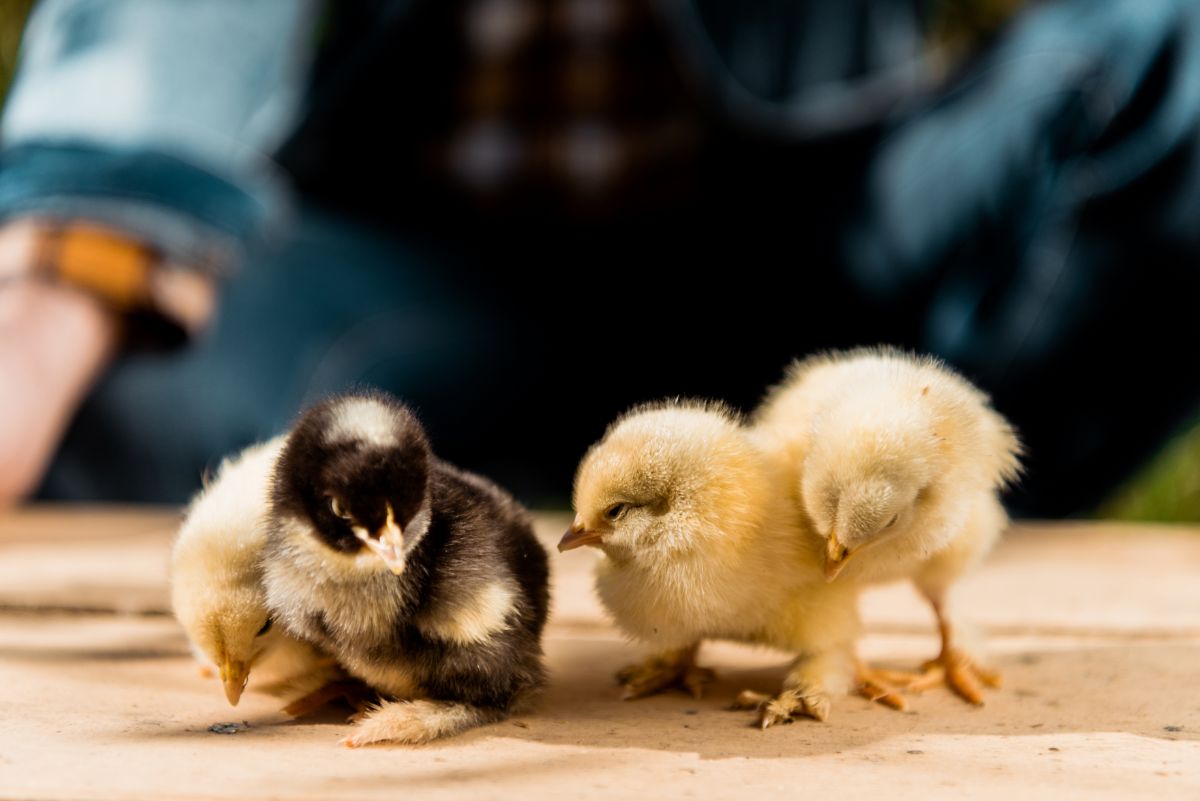
If you have your eye on more than one type or breed of chicken, you can often mix and match breeds to meet your order minimums. This is up to the hatchery, their pricing, and policies, of course. Many will do this to give more options and increase flexibility for small flock owners and backyard chicken keepers.
It is worth putting some time and thought into planning. For example, if you plan to buy both meat chickens and laying hens, time your purchase to they can be shipped together. This makes meeting minimum order requirements easier. You can also avoid small order fees this way.

If you want to keep a mixed flock of layers—maybe some with interesting different colors or shapes, or various colored eggs for fun—look for a hatchery that will allow you to mix and match and buy two or three (or more) of each type.
Though it is true that chickens will often pick and gang up on a new chicken if you introduce different breeds to an established flock, if the chicks are the same age and all raised together, this is not usually a problem. For a mixed breed flock, the best time to mix them is when you buy them as new chicks.
What Guarantees Do I Have When I Buy Chicks Through the Mail?
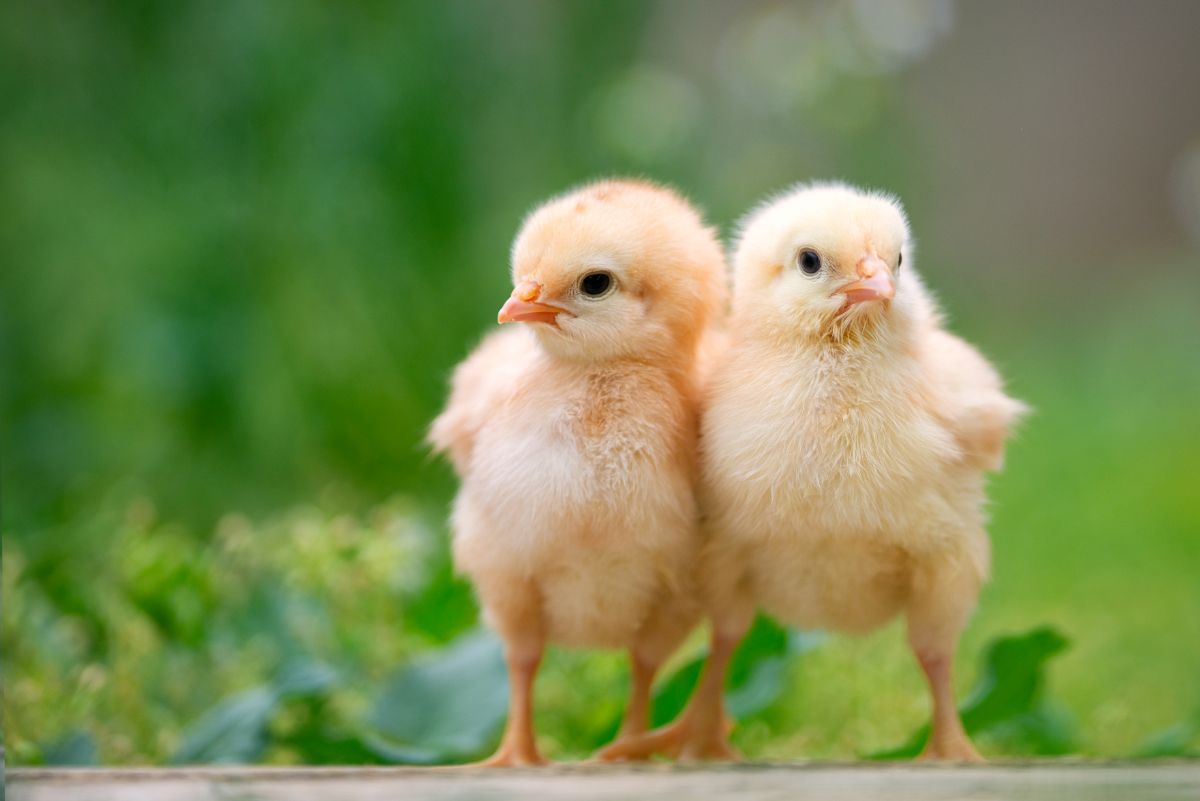
Of course, there are risks and responsibilities involved with any type of livestock, or even pets. Most quality hatcheries will have established, published policies in place to outline the different responsibilities, rights, and guarantees that are in place.
Policies and guarantees will differ between hatcheries. Some will not guarantee anything after the chicks have left their possession. Others will hold a “live bird arrival” guarantee, meaning that they will cover any chicks or birds that are dead upon arrival. Some will extend their guarantee to the first 24 or 48 hours after the arrival.
The important thing for you to do is look for these policies before you start ordering your chicks. Make sure the terms and agreements are acceptable to you. Scout around online for opinions and reviews of the hatchery to get a feel for how much you will be risking financially in the case of losses.
Typically, hatcheries will offer to replace chicks that dies in transit and send replacements out when available from a future hatch date (hopefully one in the near future), refund your money (usually for the cost of the chick, but not the shipping), or issue you a credit to your account that you can use to order new chicks. Some will ship an extra chick or two more than you ordered (or more for large orders) to cover any unfortunate losses—because sometimes these things do happen.
When you weigh the different policies and guarantees, take all things onto consideration. For example, some hatcheries will not cover chicks after they leave their control, but they may price their chicks considerably lower to begin with. Others might offer a very good guarantee that goes out to 48 hours after arrival, but their chicks or shipping prices are twice the cost of another’s to cover those losses. Some may only cover losses if you pay for upgraded shipping.
What Do I Do If My Chicks Arrive and Some Have Died?

First off, you must know the policy of the hatchery you are buying from. Don’t just research if there is a replacement policy, but also know what you have to do in order to utilize it.
For example, you may have to open your chicks in front of a postal employee in order to be refunded so that they confirm the losses. You may just be required to place the claim within a certain number of days or hours.
If you are not required by a replacement policy to check the chicks at the post office or in the presence of a postal employee, don’t. Why? The reason is simple.
Chicks are shipped in specially-designed boxes that allow adequate ventilation while still protecting the young chicks from cold, weather, or escape. If you open the box, you compromise this warmth and safety. It is best to leave the packaging intact until you get your chicks home and inside in a warm place.

It is wise to have your cell phone or camera handy when you open your box of chicks. Take pictures of the birds as they arrived, including any unfortunate dead birds. Take pictures while the chicks are still in the box –- live chicks mixed with the dead. This may sound morbid, but it shows the condition of arrival. If the picture can be stamped for time and date, even better.
If you do need to contact the hatchery due to lost chicks, do so soon—within the next 24 hours at the most, even sooner if possible. All that is required by most hatcheries is a simple call or email. If you have an email address, include a picture or two as proof of loss of life. The pictures, combined with the prompt timing, will help show that this is a shipping-related/early loss and will help to put the loss within the window for a refund or replacement.
Vaccination and Additional Hatchery Services for Mail-Ordered Chicks
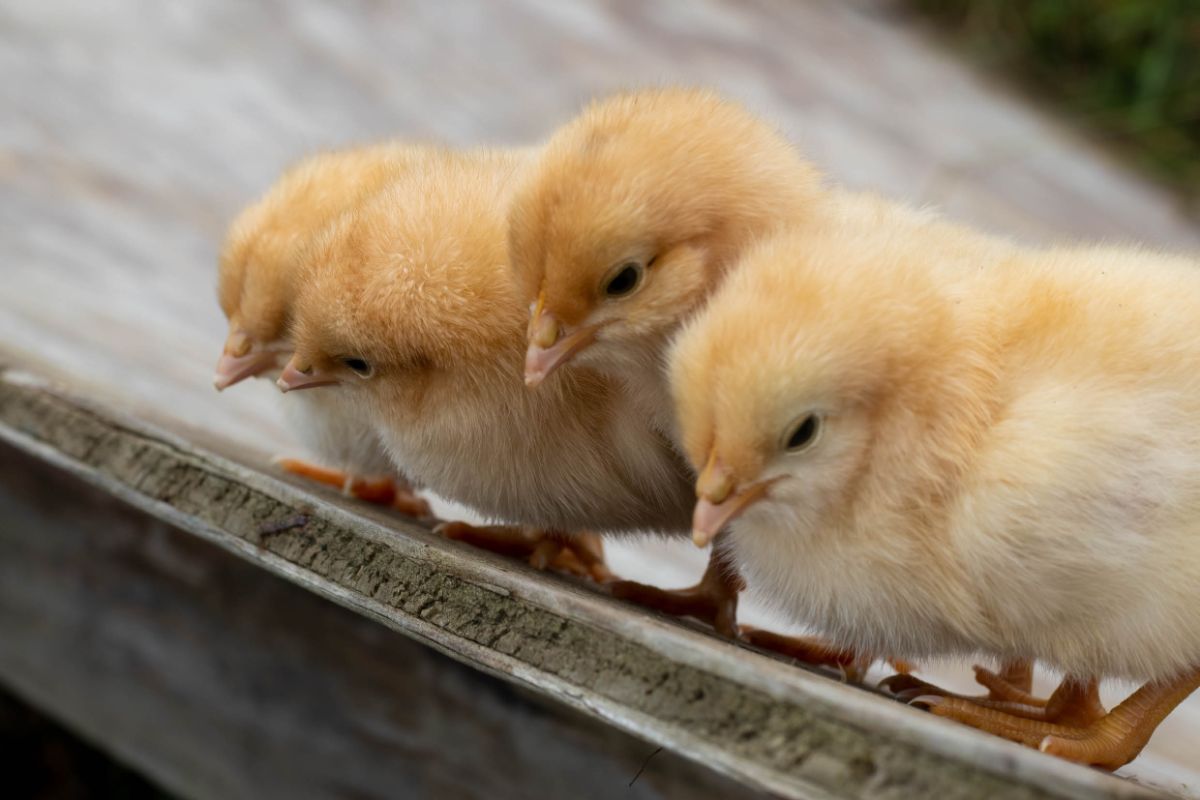
Hatcheries will often offer additional products and services. These may include things like vaccination services, additional warming pads, or products like grow gels that will provide some early hydration and nutrition if the chicks take longer than anticipated in shipping.
Some of these are good protection and good insurance. They may or may not make sense in the warmer months of the year, though. The value of some of these options may depend on how you plan to feed and raise your flock.
Vaccination, for example, can depend on what you plan to use for chick and future chicken feed. If you have your chicks vaccinated for Coccidiosis, and you then feed them a medicated feed for some or all of the time, you are wasting your money. Medicated feeds will cancel out the coccidiosis vaccination.

Vaccination may be a different consideration depending on what type of chickens you are raising. For example, a meat breed that will not live past three months may be a different decision than a layer that you intend to keep for several years. Factors such as climate, local exposure, and the intent of your breeding program are all factors to consider.
Before you start paying for additional services and vaccinations, get clear on your breeding and feeding program and read up on the value of these services for you and your flock. One advantage to buying chicks online is that this is all up to you, all available to you, and all at your discretion. The decision—and expense—has not been decided for you by a third-party vendor.
What to Do with Your New Mail-Order Chicks When They Arrive
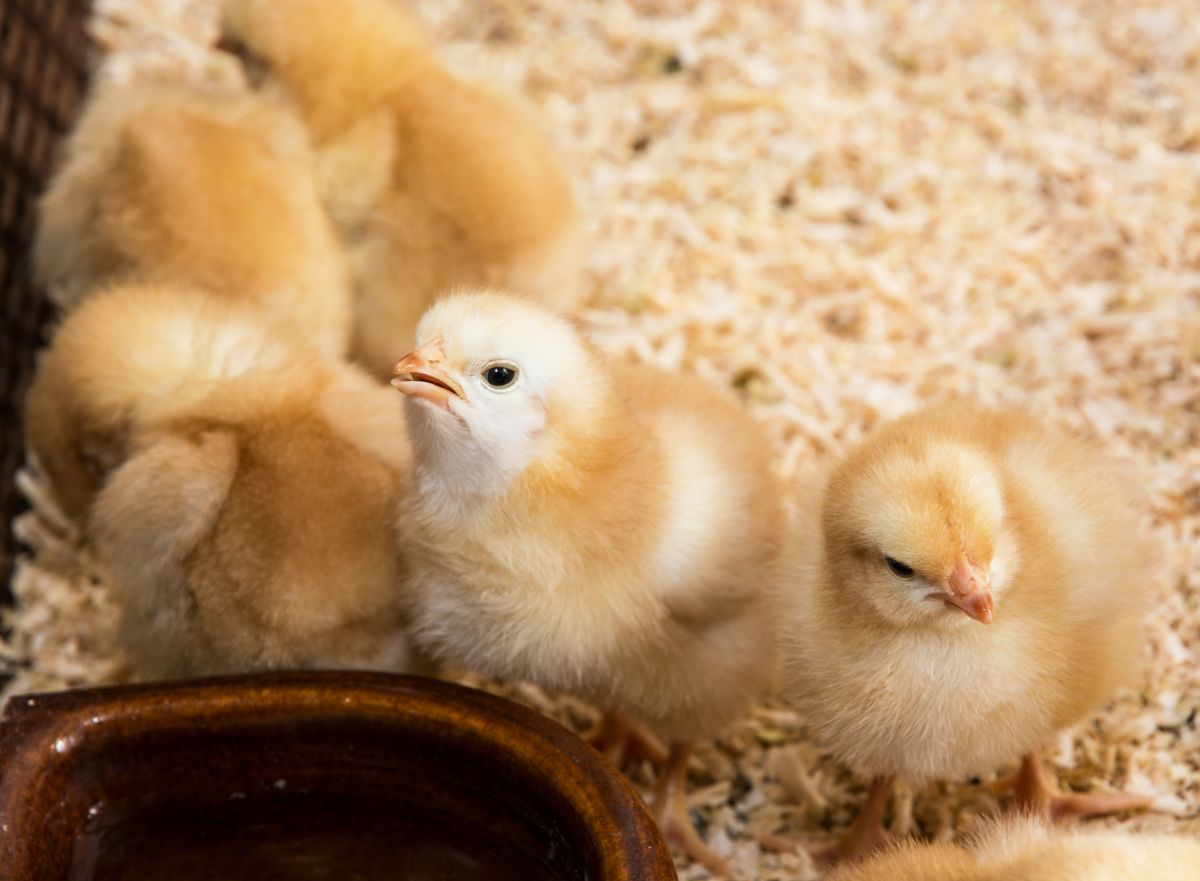
It cannot be stressed enough that you must be ready for your chicks when they arrive. Shipping is stressful. You need to get your new chicks in a warm, clean brooder with food and water available as soon as you get them.
Keep the chicks warm and out of drafts and weather while you travel home, and while you prepare to move them into your brooder. Limit their time travelling home and don’t make unnecessary stops along the way.
Set up your brood area in a draft-free location. Provide a heat lamp (recommended) or other heat source. New chicks need temperatures of 95 to 100 degrees Fahrenheit for the first week. After the first week, reduce the temperature by 5 degrees per week until the chicks are feathered out or the temperature matches that of outdoor ambient air.
Have chick-sized feeders and waterers filled with chick crumbles and warm water. The brooder should be large enough for chicks to move away from the light or heat source if they get too hot.
Be very careful with heat lamps. Make sure they are secure and cannot fall or be knocked or pulled down by the chicks or any other person or animal passing by. Make sure nothing is touching the lamp or its shield. Heat lamps can start fires!
For safety’s sake, it is best if your brooder setup is in a detached building and not in your home.
Set up your brooder by Monday on the week of shipping so that you know it is in place when the birds arrive. You can wait to fill feeders and waterers when the chicks arrive. It is best to use warm water so that you do not cool off the chicks when they drink.
When you place the chicks in the brooder, dip each chick’s beak into the water, so they know where it is and are encouraged to drink. Then get them situated but do not hold or handle them for 24 hours. Give them a chance to warm up and calm down in the brooder before handling.
More Tips for Buying Chickens Through Mail Order
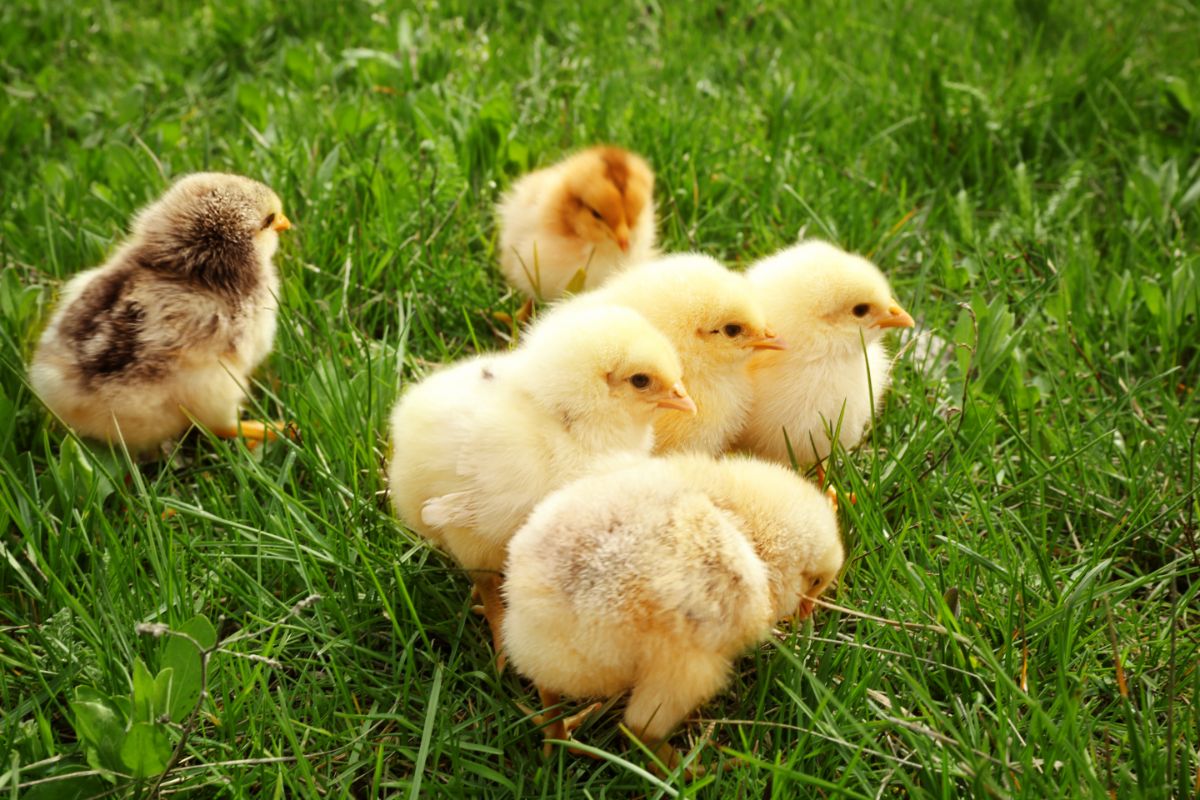
Overorder by a little. Losses are typical, and unless the loss is large, it can be difficult to economically ask for a replacement of chicks that perished.
Plan your order according to when you can be available to pick up and immediately care for and house your new chicks.

All policies and procedures for refund and replacement are not the same! Research prospective hatchery policies before you buy and know your rights for a refund or replacement!
If you are not comfortable with or not in agreement with a hatchery’s policies, do not buy from them. Not everything is within their control. Just as it is with store purchasing, there is always a risk involved in buying live animals. Make sure you can accept their policy and the potential for loss. It should be minimal, and policies should mitigate the losses, but know that losses do occur.
Be sure your address and contact information are correct with the hatchery. This includes an up-to-date email address (for shipping confirmation and tracking information) and, very importantly, a correct phone number.
Your phone number should be the one that you are most likely to be near when you expect the chicks to arrive. This is important because the number is usually printed on the outside of the box so that post office personnel can call you for pick up. It is not unusual for a larger post office or hub ahead of your post office to call when chicks arrive there and give you the option to come in and pick your chicks up there. This isn’t always the case, but, for example, if it is late in the day and it would mean holding your chicks overnight or giving you a chance to pick them up hours earlier, it may happen.
Let the post office know you have chicks coming. A few days before you expect them, give your local postmaster or counter workers the head’s up. Ask them to call as soon as the chicks arrive (which they will usually do anyway—if for no other reason than to pass along your noisy, chirping chicks!). This is also when you can offer backup phone numbers so you can be reached at home, office, or on your cell phone.
Have a backup plan for pickup. The chicks may arrive a day or two early or a day late. It’s best to have a backup person who can run to the post office when the call comes in if you cannot. This person should know how to situate the new chicks in the brooder so that they do not have to wait for you to return.
Use your hatchery as a resource. No hatchery wants birds to die, keepers to fail, or losses to occur. Your hatchery’s website should be a source of good information and resources. Many also maintain a call line for questions and concerns. Take advantage of your growing partner. If you do have issues, address them as soon as possible and work together to make the situation right.
Buying and raising chicks through mail-order hatcheries is an excellent option for flocks of any size. Keeping chickens is an economical, fun, and interesting experience. Working directly with good chicken hatcheries is an excellent way to get started.
